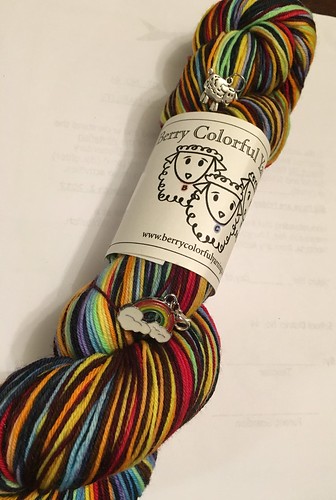Beneath these situations, CLD coated by Plin2-VSV or Plin3-VSV had been dispersed commonly inside the cytoplasm (Figure 1A), and isoproterenol treatment did not look to impact the diploma of their dispersion or change their cellular distribution. As a result, in distinction to Plin1, neither Plin2 nor Plin3 induced restricted CLD clustering, and the distribution of CLD coated by these proteins did not look to be considerably motivated by isoproterenol.
(A) Agent images of CLD localization in HEK293 cells stably expressing Plin1, Plin2-VSV or Plin3-VSV and incubated in tradition media with no (Control) or with ten mg/ml isoproterenol for 1 hour (Isoproterenol). CLD in cells expressing Plin1 have been immunolocalized with antibodies to Plin1. CLD in cells expressing Plin2VSV or Plin3-VSV ended up immunolocalized with antibodies to VSV. Cells expressing Plin1 have been cultured in CM. Cells expressing Plin2-VSV or Plin3-VSV have been cultured in CM+OA. Fluorescence of Hoechst-stained nuclei (N) is integrated for orientation. The dimensions bar is ten mm. (B) 895519-90-1 Effects of N- and C-terminal locations of Plin1 on CLD distribution. Representative images are shown of CLD localization in HEK293 cells stably expressing complete duration Plin1, Plin1(1197)-VSV or Plin1(19817)-VSV adhering to incubation in media without (Control) or with 10 mg/ml isoproterenol for one hour (Isoproterenol). CLD in Plin1-expressing cells had been immunolocalized with antibodies to Plin1, people in cells expressing peri(197)-VSV or peri(19818)-VSV had been immunolocalized with antibodies to VSV. Cells expressing Plin1 or peri(19818)-VSV ended up cultured in CM. Cells expressing peri(197)-VSV were cultured  in CM+OA. Fluorescence of Hoechst-stained nuclei (N) is integrated for orientation. stably expressing N-terminal (amino acids 197) and C-terminal (amino acids 19817) fragments of Plin1 as VSV-G epitope tagged proteins in HEK293 cells. The two portions of Plin1 ended up envisioned to bind CLD dependent on released proof [sixteen]. In cells expressing the 197 fragment, (Plin1(197)-VSV), the development of CLD depended on culturing them in CM+OA. Beneath these conditions CLD coated by Plin1(197)-VSV ended up totally dispersed in the cytoplasm (Determine 1B), and isoproterenol publicity did not even more affect their distribution. In distinction, in cells expressing the 19817 fragment (Plin1(19817)-VSV), we discovered tight perinuclear clusters of VSV-constructive CLD when they ended up cultured in either CM (Determine 1B) or in CM+OA (knowledge not shown). Following publicity to isoproterenol for one hour, VSV-optimistic CLD in15123241 Plin1(19817)-VSV cells had been dispersed in the cytoplasm, indicating that the Plin1 CTR is adequate for clustering and hormone-dependent dispersion of CLD.
in CM+OA. Fluorescence of Hoechst-stained nuclei (N) is integrated for orientation. stably expressing N-terminal (amino acids 197) and C-terminal (amino acids 19817) fragments of Plin1 as VSV-G epitope tagged proteins in HEK293 cells. The two portions of Plin1 ended up envisioned to bind CLD dependent on released proof [sixteen]. In cells expressing the 197 fragment, (Plin1(197)-VSV), the development of CLD depended on culturing them in CM+OA. Beneath these conditions CLD coated by Plin1(197)-VSV ended up totally dispersed in the cytoplasm (Determine 1B), and isoproterenol publicity did not even more affect their distribution. In distinction, in cells expressing the 19817 fragment (Plin1(19817)-VSV), we discovered tight perinuclear clusters of VSV-constructive CLD when they ended up cultured in either CM (Determine 1B) or in CM+OA (knowledge not shown). Following publicity to isoproterenol for one hour, VSV-optimistic CLD in15123241 Plin1(19817)-VSV cells had been dispersed in the cytoplasm, indicating that the Plin1 CTR is adequate for clustering and hormone-dependent dispersion of CLD.
Given that Plin1 seems to immediate equally clustering and dispersion of CLD, we up coming sought to recognize the functional determinants of its steps. Preceding reports demonstrated that expression of Cterminal regions of Plin1 in fibroblasts induce CLD clustering [sixteen], and that dispersion of clustered Plin1-coated CLD relies upon on PKA-dependent phosphorylation of Plin1 on S492 [15]. Nonetheless, evidence that phosphorylation of serines inside of the Plin1 N-terminal location (NTR) alter the conformational qualities of the Plin1 CTR [23] increase the likelihood of NTR interactions contributing to clustering and/or hormone-dependent dispersion of Plin1 CLD. To even more determine the function of the Plin1 CTR in mediating clustering and dispersion of CLD we produced mobile traces.Isoproterenol publicity has been demonstrated to induce the association of Plin2 with Plin1-coated CLD in NIH-3T3 C/EBPa cells [19]. Because Plin2 is proposed to maintain CLD in a dispersed state [14], we subsequent investigated no matter whether the binding of Plin2 and/ or potentially Plin3 to Plin1-coated CLD bring about their dispersion. The outcomes of Plin2 on Plin1-CLD dispersion ended up investigated in HEK293 cells that stably co-categorical Plin2-VSV and Plin1 (Plin2Plin1 cells) [18].
